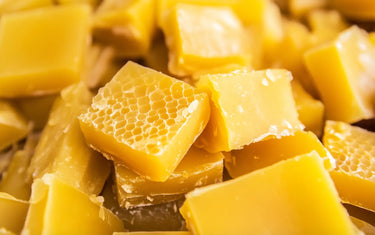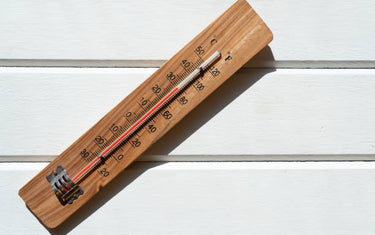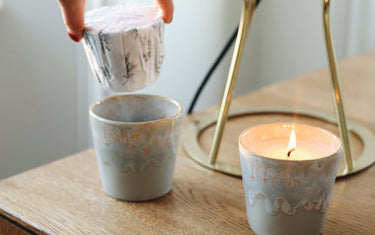4 min read / 21 January 2023 / Laura Garvin Gomez
What Essential Oils are Safe for Cats?
While essential oils can have many benefits for humans, it is important to remember cats are more sensitive to these potent products.
Share this post

Essential oils can work wonders for humans, helping us to improve skin and hair conditions, relax our mood and improve sleeping patterns.
However, they may not be friendly to your cat, and as a pet owner, there are some important things to be aware of to ensure your feline friend can remain safe and well at home. Here look at which essential oils are safe for cats, warning signs if they fall ill and what you can do to reduce exposure.
Learn more about how to use essential oils safely around pets.
Are essential oils safe for cats?Unfortunately, there are not any safe essential oils for cats, as they all have the potential to harm your pet. This is true if they are in their concentrated form (100% undiluted). When diluted with water or a carrier oil – the risks are reduced, but they will still pose a danger to your cat. Some essential oils you should pay particularly close attention to are:
If you own a cat, we advise that you do not expose them to essential oils in any form, as this ensures they always remain safe. Exposure to carrier oils can always be harmful to cats as coming into contact with it could cause a tummy upset for your pet. |
Why are essential oils not safe for cats?
Your cat can be exposed to the toxicity of essential oils through ingestion, skin contact or inhalation. Even humans are advised to use carrier oils before applying them to their skin, so it’s understandable why a cat could be more susceptible to the risks posed by essential oils. Exposure to essential oils can lead to severe organ damage, which could cause liver failure, seizures and, in some cases, even death.
Avoid applying essential oils to your cat’s skin or fur as they could either lick it off when grooming and consume it, or the oil will be absorbed into their skin and enter their body.
Inhalation of essential oils can occur if you have plug-in or reed diffusers around the home and could also induce adverse psychological effects. In most cases, essential oils are diluted with water, which reduces their potency, so these effects are rare, although the risk is always present. Ultrasonically or nebulised diffused essential oils should be avoided if you are a cat owner, as these can pose an even greater risk.

How will I know if essential oils are affecting my cat?
There are some symptoms to look out for which may indicate your cat is reacting to essential oils, including;
- Vomiting
- Shaking and trembling
- Excessive drooling
- Lethargy, depression or dullness
- Walking unsteadily (as if drunk)
- Difficulty breathing or opening their mouth to breathe
- Collapsing or having a seizure
If you notice that your cat’s skin is red or sore, it could mean they had skin contact with an essential oil. Even if you do not see damage to their skin, it does not mean they are necessarily ok.
You should contact your vet immediately if you suspect your cat has come into contact with an essential oil, even if there are no symptoms present. If you can inform your vet which essential oil your cat may have been exposed to and its concentration levels, this could help them find a faster solution.

How can I reduce the risk of essential oils to my cat?
If you are worried about the risks posed by essential oils to your cat, use some of the following tips to minimise their exposure:
-
Store essentials away from your cat
While you are likely already doing this, always make sure that your essential oils are stored in a space that cannot be accessed by your cat.
-
Wash your hands after using oils
If you have touched undiluted oils, ensure that you wash your hands thoroughly before petting or touching your cat.
-
Do not clean your home using essential oils
Lemon essential oil is used by some people to assist with cleaning tasks, but if you own a cat, avoid using essential oils for cleaning as cats will likely come into contact with it.
-
Always dilute your essential oils
If you are a cat owner that intends to buy essential oils, try to make sure they are heavily diluted to reduce any risk posed to your cat.
-
Keep your cat away from diffusers
Plug-in diffusers, reed diffusers, and nebulisers emit oils into the air that your cat can inhale. Try to keep your cat out of rooms where these are present.
-
Get a prescription flea product
Some manufacturers also include essential oils in pet products. For example, some flea-repellent treatments contain an essential oil in the ingredients, which should be avoided. Instead, ask your local vet for a prescription flea treatment product, as this is a safer option for your cat.

Most people love essential oils for their fragrance or the health benefits they can offer. However, because so many of the oils pose a risk to cats, you need to use them as safely as possible when they are around. You should always err on the side of caution and ‘pet-proof’ your space to keep your cat from harm. Ideally, you should avoid using them completely, but if you do buy and use essential oils, use the tips we provided above to minimise the risk to your cat and any other pets you may own.









